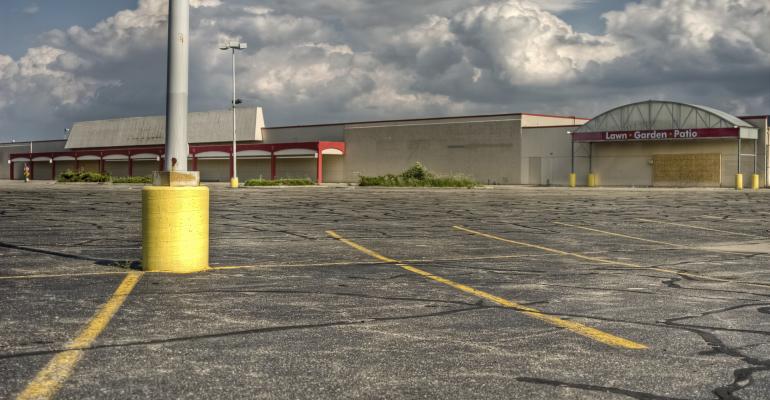The bifurcation of America’s malls does not appear to be ending soon, according to some retail real estate experts.
With announcements of department store closures, coupled with the troubles in the specialty apparel sector, some U.S. malls will continue to struggle, while the few top malls will continue to do just fine.
As the country’s top malls have already been working to reposition themselves, transforming into entertainment centers to help draw in consumers, lower-quality malls in markets with smaller populations and lower incomes will continue to close—a trend that is underway today, says Suzanne Mulvee, director of research at CoStar, a commercial real estate data firm.
“It’s not a pandemic, but it’s a steady stream, if you will, of closures,” Mulvee says.
There are approximately 1,200 malls in the U.S., but around 25 percent of class-B malls will suffer, Mulvee says. “We don’t think B malls will exist going forward,” she notes.
Green Street Advisors, a research firm, in a webinar on the mall sector that took place on Wednesday, forecast a 6.0 percent drop in market revenue per available foot (RevPaF) for class-B and -C malls from 2018 to 2022, versus a 0.5 percent increase for class-A malls during the same period. For power centers, the firm expects a 3.5 percent drop in market RevPAF.
Private market values of class-B and -C malls have also dropped the most since January 2017, according to Green Street, plunging 27.0 percent and 25.0 percent, respectively, year-over-year. Meanwhile, the values of class-A malls declined by 14.0 percent year-over-year.
“We do have an oversupply of malls,” says Alan Esquenazi, a partner at CREC, a Florida-based real estate firm. But primary malls across America “are doing exceptionally well, and demand continues,” he notes. Meanwhile, in secondary markets, there likely can only be one mall that can survive, and locations where populations are dwindling will struggle the most. “Those tertiary malls are in trouble,” Esquenazi says.
DJ Busch, managing director of retail at Green Street, said during the webinar that the firm is very confident about the fate of the top 100 malls in the country, but confidence drops for the following 100, and the next 100 after that. The question remains about how much capital will be required for a mall to be the best in its market. “The bar to be considered an A-mall is, I think, increasing,” Busch said.
Enclosed regional malls have long been overly focused on apparel, a struggling segment thanks to the rise of fast-fashion brands like H&M and Zara that have pushed down prices, Mulvee says. Meanwhile, health, fitness, food and services categories have blossomed. “The malls have to redefine what they’re dedicated to,” Mulvee says.
Gary Wall, supervisor of the Township of Waterford, Mich., is seeing this scenario play out in his municipality, the home to the Summit Place Mall. The retail center, which sits on a 74-acre property, opened in 1962 and closed in 2009, Wall says.
The closure stemmed from a perfect storm of factors, according to Wall: the rise of online shopping, the financial crisis and lots of competition in a market that had many other retail centers that were also struggling. A nearby mall seemed to divert shoppers, Wall notes. “[The Summit Place Mall] was dated,” he adds. “I think it needed to be updated, more modernized.”
The town has been trying to force demolition of the property so other developers can repurpose the land, but the mall’s owner, SD Capital, has challenged the move, Wall says. A representative for the mall owner did not respond to requests for comment.
There is interest among the commercial real estate community to develop the large parcel, according to Wall—and the town is eager to see it become something new as well. With the area already saturated with retail, Wall says he hopes to one day see the parcel become a mixed-use property, perhaps with a hotel or multifamily units. “You don’t make money sitting on things,” he notes.
Still, Esquenazi does not predict that blighted and abandoned structures in small towns will soon dot the country. There are investors who look forward to taking over 40 to 60 acres of land. “There are investors excited to reposition malls that are in trouble,” he notes. These new developments may not resemble traditional malls, but instead could become anything from multifamily to mixed-use to self-storage properties, he adds.
In addition, not all retail segments are expected to struggle, and a look at demographics helps to illuminate some bright spots for the property type. For example, in a couple of years, the millennial generation will reach the peak consumer years of 35 to 54, Mulvee notes, which could help propel demand for strip centers and power centers. “More suburban, necessity-based shopping should start to do better in a few years when the millennials start to shift into suburbs,” Mulvee says.




